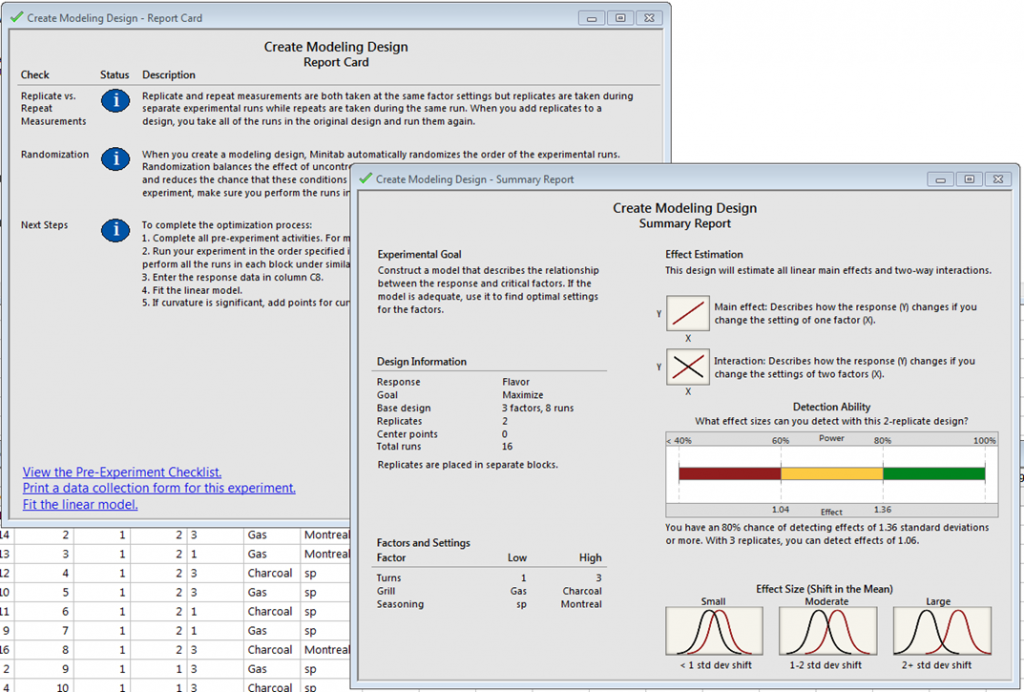

MINITAB DOE HOW TO
Understanding how to interpret interaction plots.Screening out the non-significant factors.Analysis of experimental results using the two-sample t-test, ANOVA, and the probability plot.Establishing the basic principles with a two factor and three factor design – explanation of main effects and interactions.Understanding the statistical importance of avoiding excess variation in experiments – the role of measurement and careful control of the experiments.Explanation of the terminology – responses, factors, levels, replication, randomization, design points, design runs.Planning the experiment and determining the experimental objective.Constructing full-factorial designs and applying computational and graphical methods to analyse and evaluate the significance of results.Applying the principles of power and sample size, balance, replication, order, efficiency, randomisation and blocking, interaction, and confoundingĭesign and Analysis of Factorial Experiments.

Applying the basic elements of experiment planning and organizing, including determining the experiment objective selecting factors, responses, and measurement methods choosing the appropriate design.Definition of terms such as independent and dependent variables, factors and levels, response, treatment, error and replication.The normal, Student-t and F distributions.Mean, variance, standard deviation, degrees of freedom.Introduction to Statistics Underlying Experimental Design


 0 kommentar(er)
0 kommentar(er)
